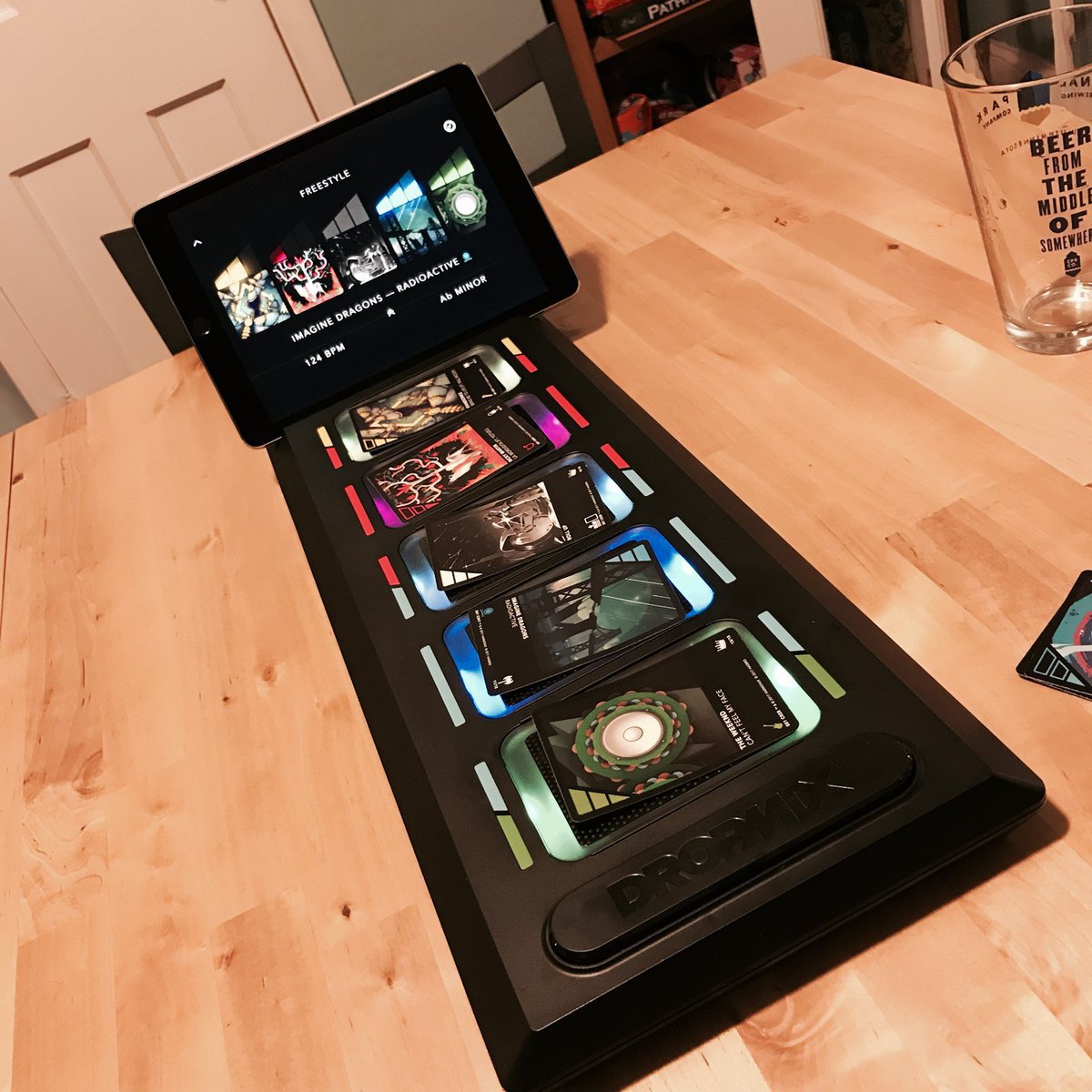Three new board members joining the Minnestar board! Great to have more talented people driving this organization forward! 👏
A lot of snow coming down in Minneapolis! ❄️

Two hours running snow blower. I’m done for tonight. We’ll see what we wake up to in the morning. The snow is still coming down heavy.
Let it snow. ❄️

School cancelled tomorrow. Kids are filled with excitement. 😊 I remember that feeling…
The Vikings didn’t play well tonight, but this game is just hard to watch. 🏈☹️
2017 in Meetings
Manager and maker schedules is a relatively popular topic. The basic thesis is that maker schedules need to consist of large blocks of dedicated time on a goal. You need time to connect with the work, hopefully, achieve some period of flow and realize an objective. Manager schedule, however, is divided up into small segments of time to connect with people and topics, get information and make decisions.
In my position, I operate on manager time with occasional injections of maker time. I am deliberate about how I manage this. My objectives and goals are realized, in part, through my calendar. In recent years I felt I could better align my calendar and time with my objectives, so in 2016 I did an end-of-year one-time analysis of my calendar and made some changes. After reviewing that analysis, I decided the benefit was valuable enough that in 2017 I committed to collecting more granular data. My goal is to determine alignment and effectiveness of my schedule to my objectives. I developed a set of workflows that I run at the end of every day to collect this data.
Now that I’ve collected a full year I can look at an overall budget to actual analysis. In business, we always look at our financial budget and compare to actual. In managing my time, I find it helpful to consider a budget and measure the actuals as well. You cannot budget well if you don’t collect actuals.
I’m going to share some of the statistical information that I gathered while doing this in 2017. I’m not sharing any information about the content or context. You may consider this navel-gazing, but some may find it interesting, and perhaps it will encourage others to be more deliberate about managing their time.
This analysis refers to meetings on my calendar. These are meetings involving other people. I block time on my calendar for solo work, and that is excluded in this analysis.
In 2017 I had a total of 1,512 meetings. These meetings occurred over 223 days. That is an average of 6.8 meetings per day.
Meeting frequency is highest on Thursday. However, the largest cumulative hours are on Wednesday. Friday has shorter meetings on average. I would have thought that meeting count would spike on Tuesday and then trend down through the week.
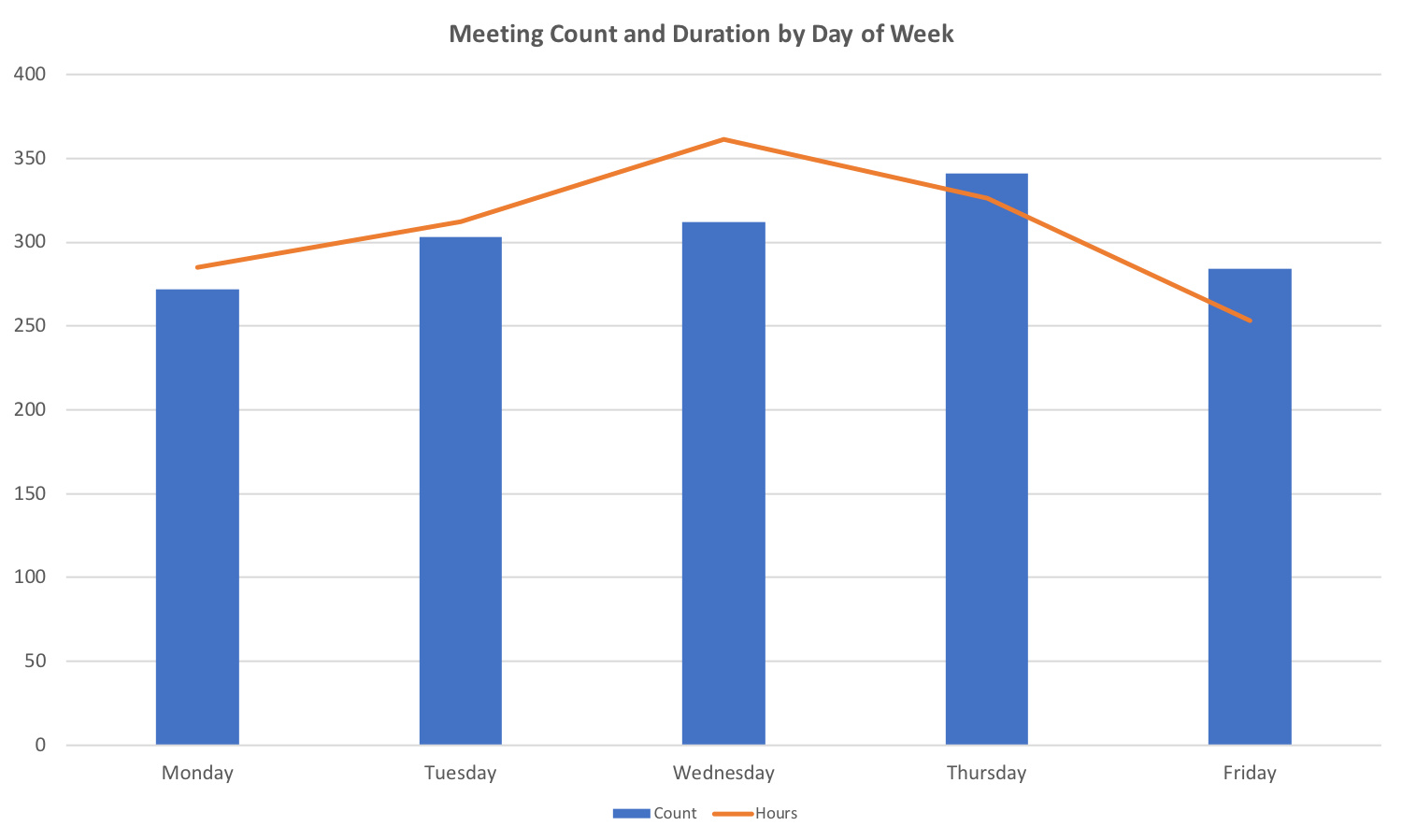
Let’s look at how these meetings occur over the course of the year. The average of 6.8 meetings per day shows visually here. There are many spikes, with one notable day having 13 meetings. Weekends are shown here, and you can see the 2-week vacation I took in the summer.

Daily data is noisy, and it’s easier to look at the 52 weeks of the year versus the working days. Here we look at the meeting count by week along with a 4-week moving average.
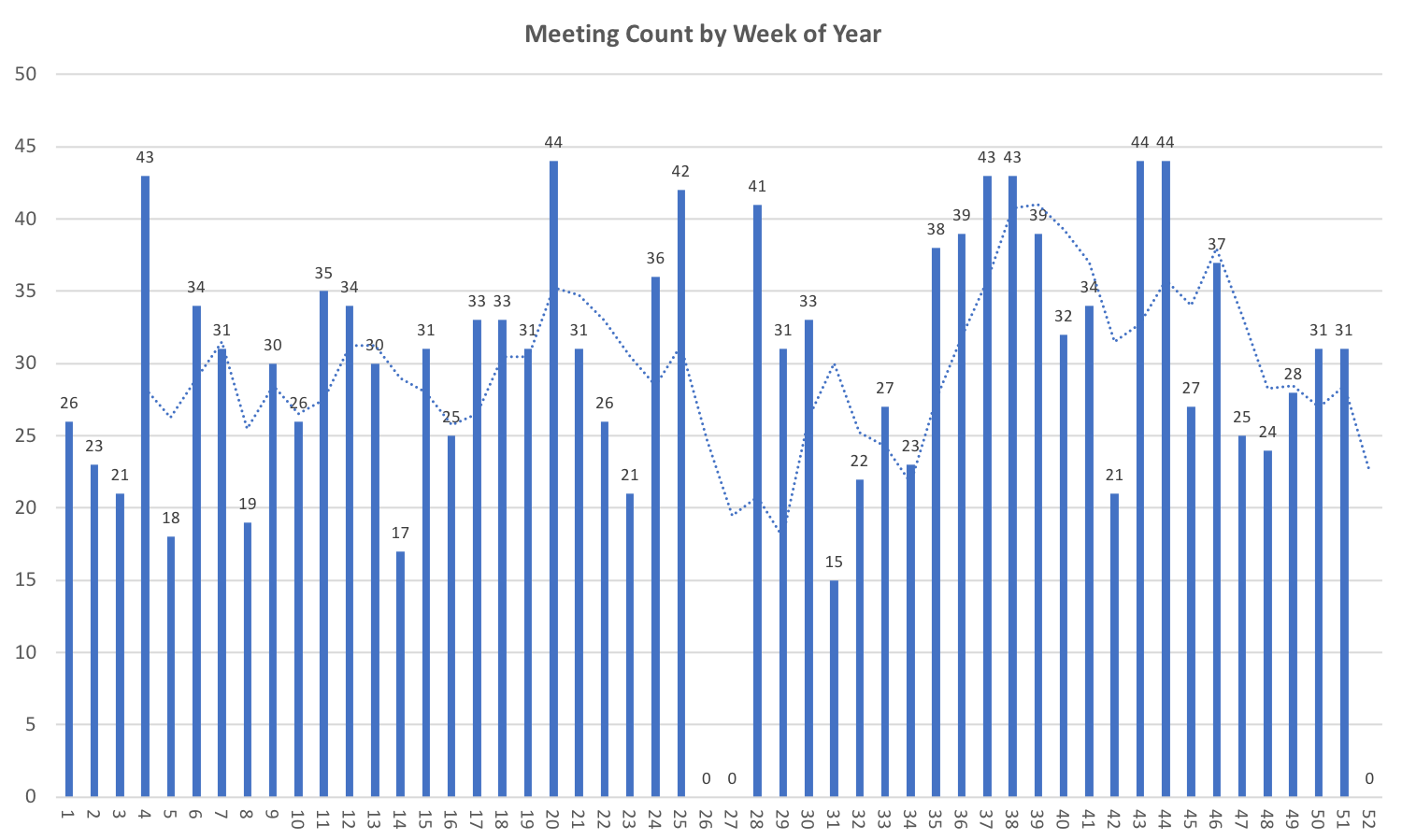
I got curious about how much of the week is scheduled in meetings. If we use an 8-hour day as a baseline then consider the load to be the percent of those 8 hours that were scheduled what would my weeks look like? It isn’t uncommon for me to have all of my time scheduled, and occasionally be over scheduled. As mentioned earlier, I do block time on my schedule for solo work activities. As a result, 81.3% is fully scheduled. Whenever I am over 81.3% I’ve removed that block to allow for more meeting time.
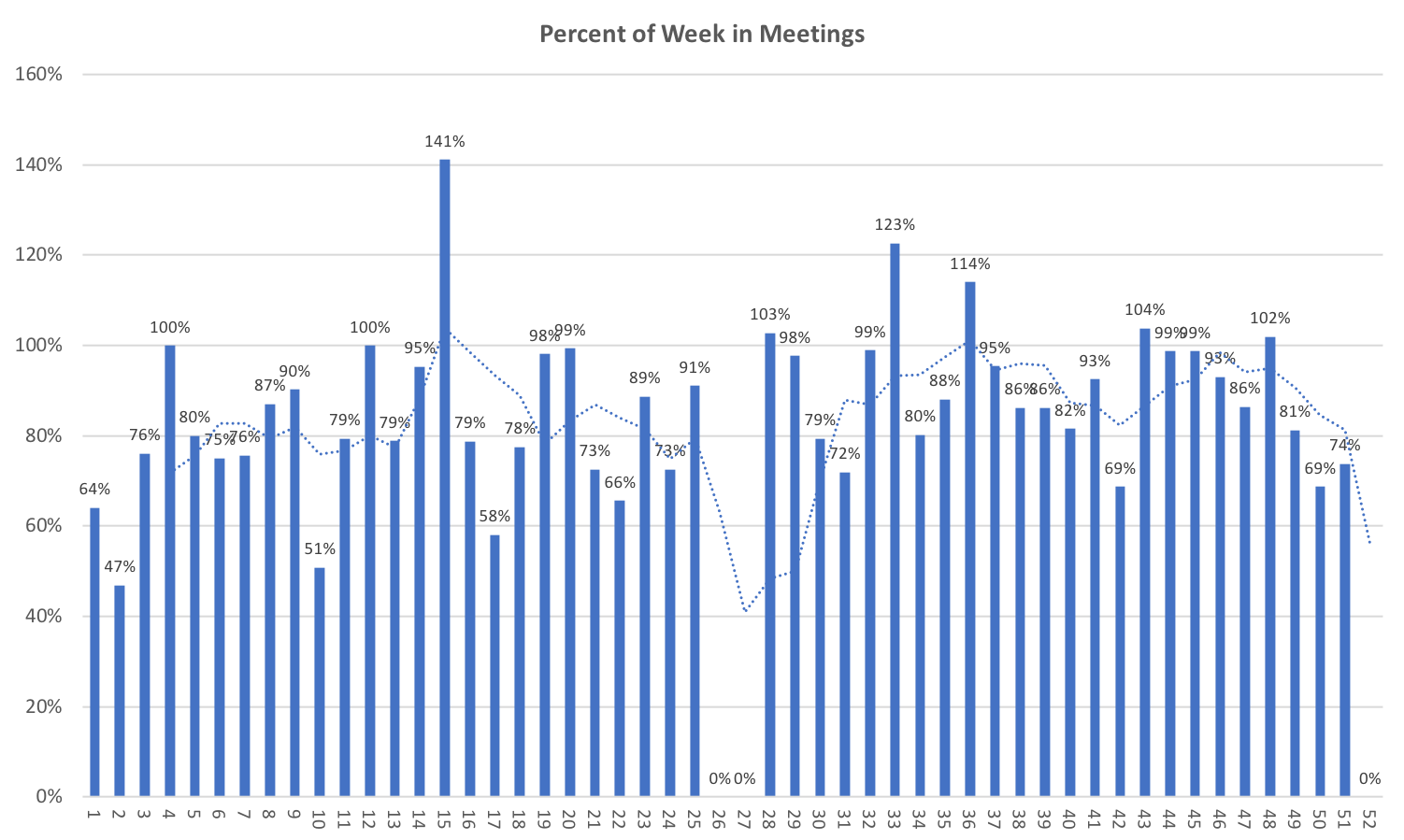
How about the start time, do more meetings start in the morning? I certainly feel like the morning is more frequently scheduled than the afternoons. Here is meeting frequency by start hour. My average day gets a fast start at 8 am with a dip at 12 pm. Most days I have meetings through lunch. There is a dip again at 4 pm. In our office, we are much more likely to start earlier than later, and you can see that with the frequency of 7 am meetings versus 5 pm. The meetings in the middle of the night were in Ukraine and are represented here in central time.

I was curious to know the distribution of durations. What duration of meetings do I have the most often? The most common meeting for me is 30 minutes (37.3%) and then 60 minutes (29.1%). 45-minute meetings are also common (12.5%), that is the normal time I schedule for 1-1 meetings with my team.

This statistical data is most likely to gauge overall stress level or demand for my time. I also get this data in a weekly report and it is a nice check on my qualitative assessment of the week. The additional data I collect about topic and context is very actionable. I can see areas where I’m over or under budget on time and can consider structural changes to my schedule to align better. I like this act as the shift forces me to delegate some topics more, disconnect from some things and give more time and focus to the areas that I specifically need to focus on for success.
I would highly encourage anyone that has more than 50% of their time scheduled to do a similar exercise. It will provide some insight both to how you are feeling and the results you are getting.
I can’t think of a reason I would ever want a notification from my Kindle app.
2017 in Links
For years I’ve been keeping all of my links on Pinboard and this year I decided to start publishing them at Link Thing. I also publish my links in common formats that can be downloaded. I thought it would be fun to look at all the links from 2017.
In 2017 I saved 913 links. I most frequently create links at 8pm and 10pm, with 7am coming in next. It’s interesting that I did a link in every hour of the day in 2017. Why I was linking something at 2am instead of sleeping is a different topic.
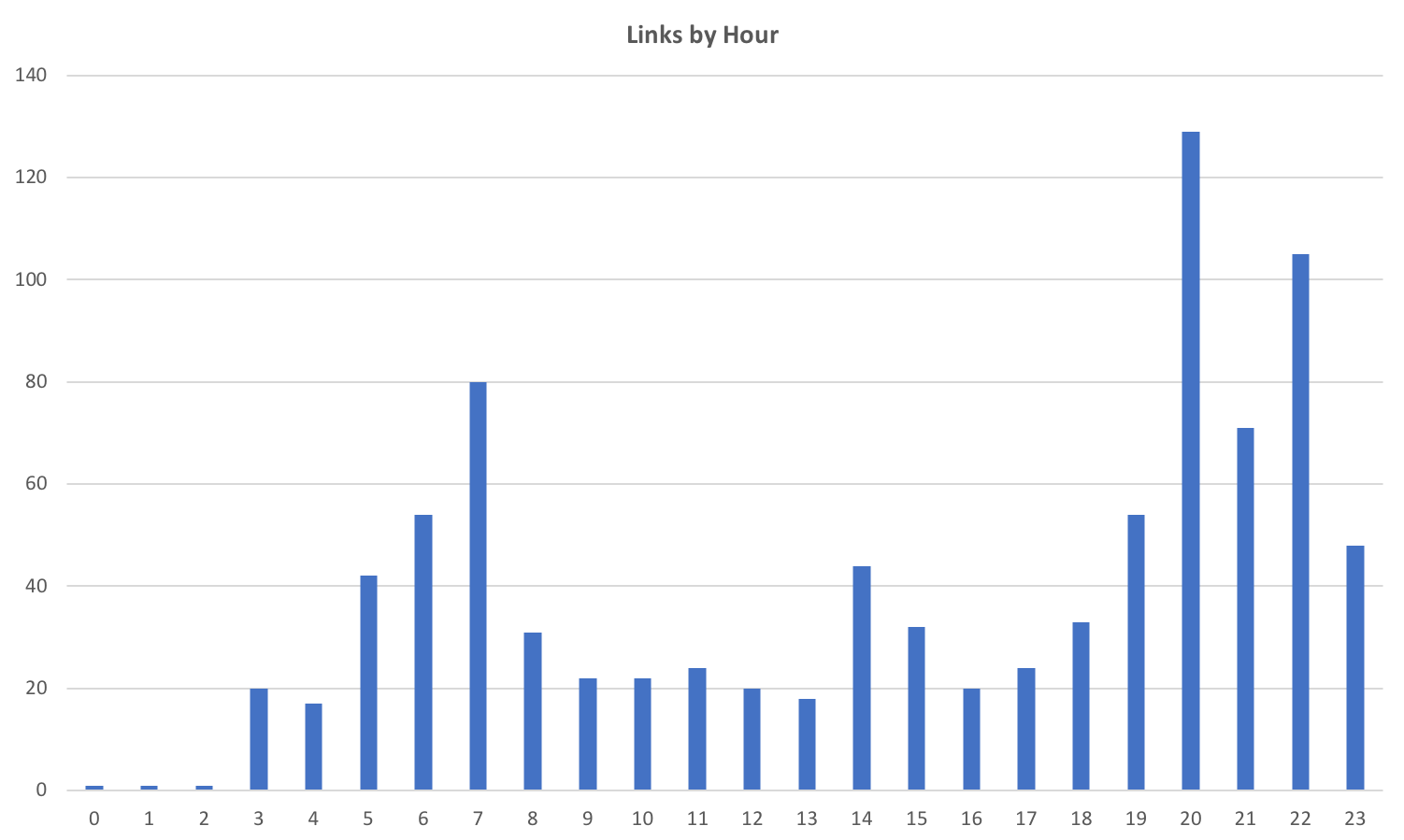
Friday is the day that I save the most links. This is a little skewed by my reading workflow which includes staging links in Safari Reading List to queue up often before reading. After reading I may save a link. I almost always clear my reading list out on Friday night, before I publish my Weekly Thing newsletter.
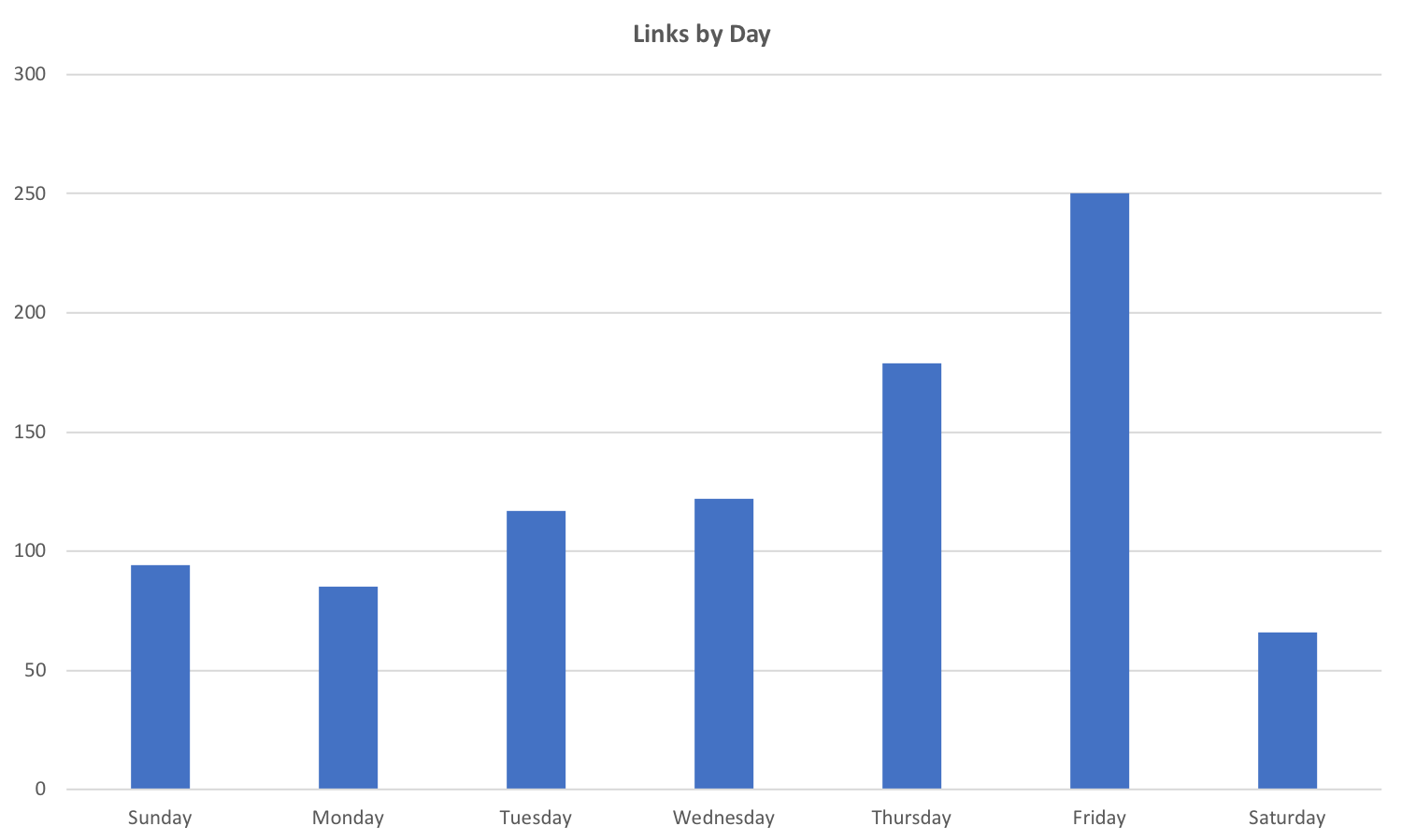
I definitely started linking more once I started publishing the Weekly Thing in April and my link blog. Prior to that the only links I would have saved were ones I would revisit, after that I started saving links for anything I felt was worth highlighting and sharing.

I saved links from 523 different websites in 2016. That’s just 1.75 links per website on average. I like the diversity of sources that represents. The top 30 websites represent 298 links, or 32.6% of all links. I was surprised to see Medium at the top of the list.

651 of the links I saved were secured with HTTPS, a full 71% of all links for the year. Hats off to everyone for making the web more secure and private.
I was curious how my links spanned various top-level domains. 85% of links are in the .com TLD. There are 29 top-level domains that I only bookmarked one or two links from.

It would be fun to take this corpus of data and do further analysis. Some graph representation of sites through domain names, analysis by countries or even sentiment and topic analysis of the links themselves would be cool. I’ll defer that to next years post.
One of my favorite Saturday morning spots to do some reading.
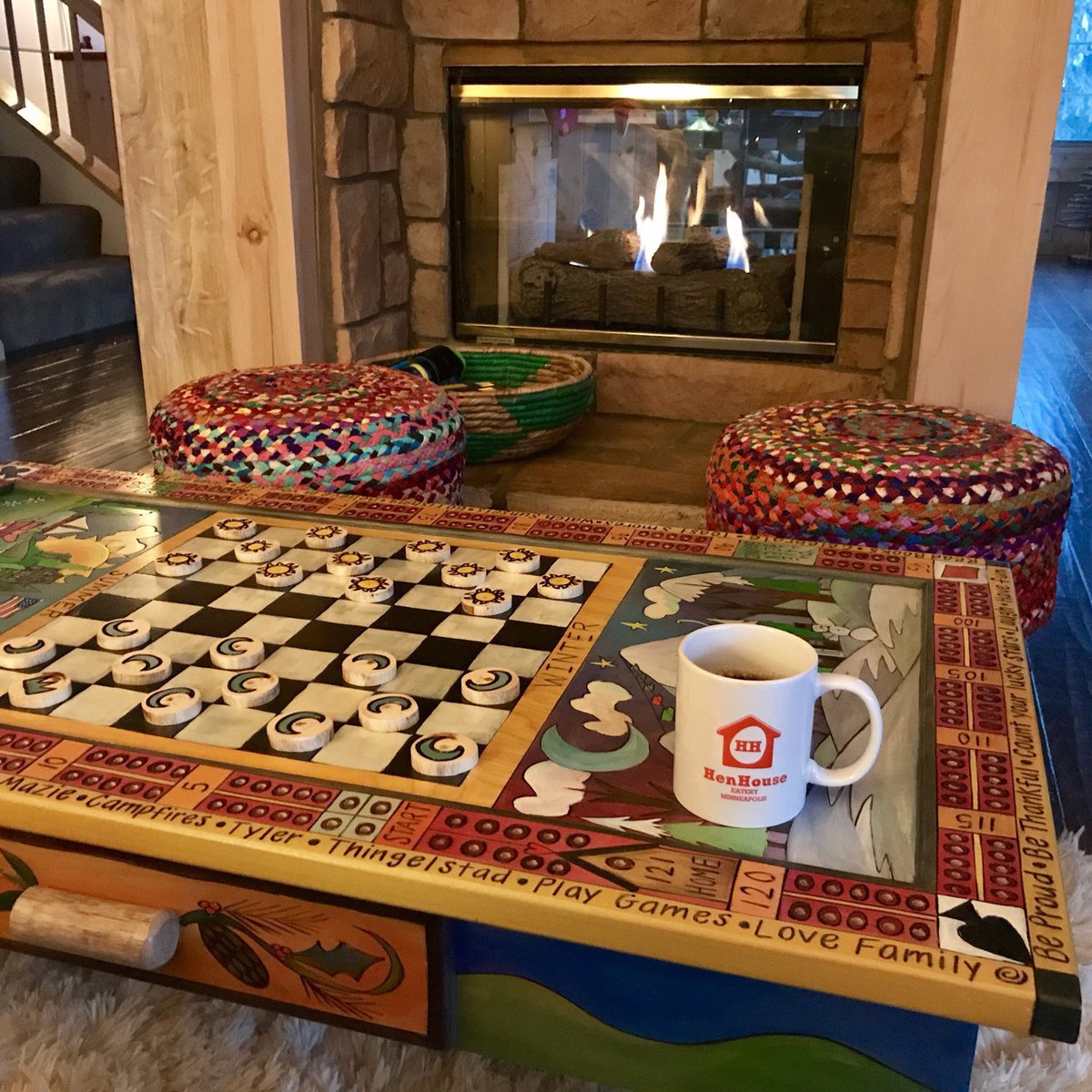
Gas pumps with screens blaring advertising should be required by law to have always present off buttons.
I have been impressed with the Anki Cozmo — it’s amazing how much character this little robot has! 🤖

Getting the whole family shoveling the snow makes it very quick! 🌨🌨🌨

Espresso crema.

New light hung! 💡 This is about the extent of my handyman skills. 👷🏻♂️

Trying my hand at some Nordic Waffles this morning with the help of Stine Aasland’s We Love Waffles!
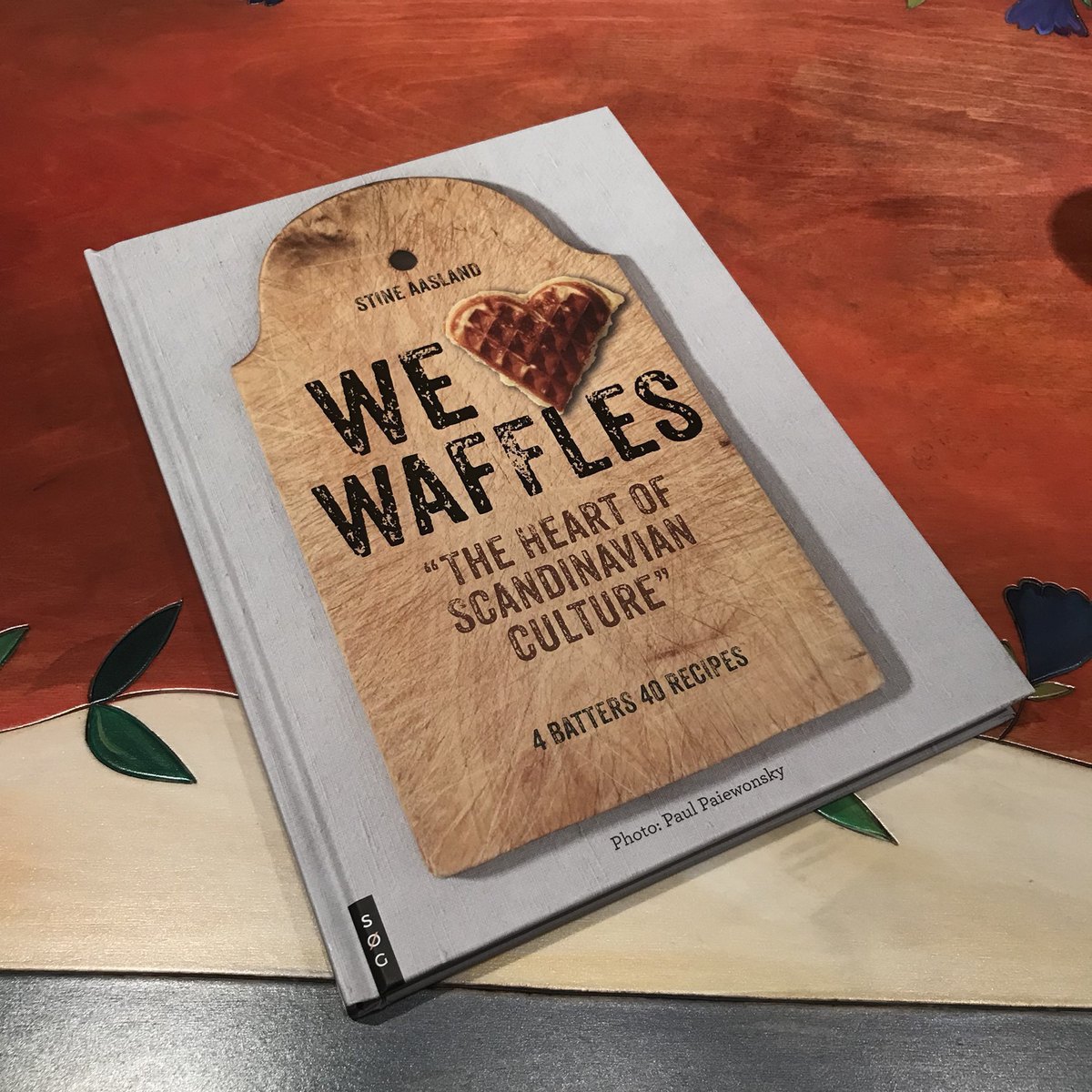
Pleased with my first go at Nordic Waffles! Tasted delicious. Kids liked them too. May cut the cardamom back a touch next time.

Went to Young Joni for dinner for the first time. 🍽 Delicious food and amazing location. 👍🏻
So many books. Wild Rumpus Books. 📚

A smartphone filled with social apps is a manifestation of Buddhist monkey mind.
I continue to see more people covering the camera in their laptops. How come nobody covers the forward facing camera on their mobile phone?
